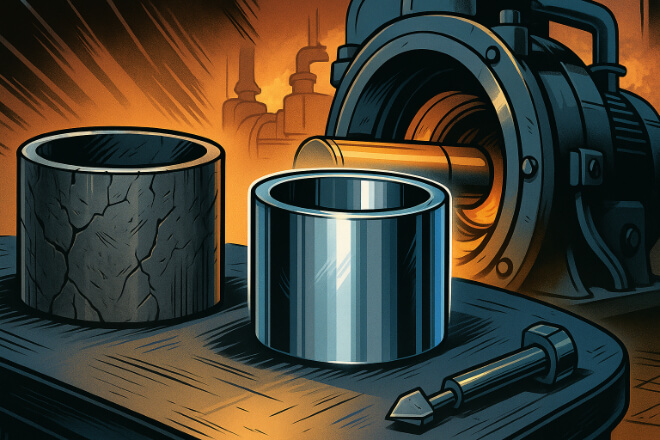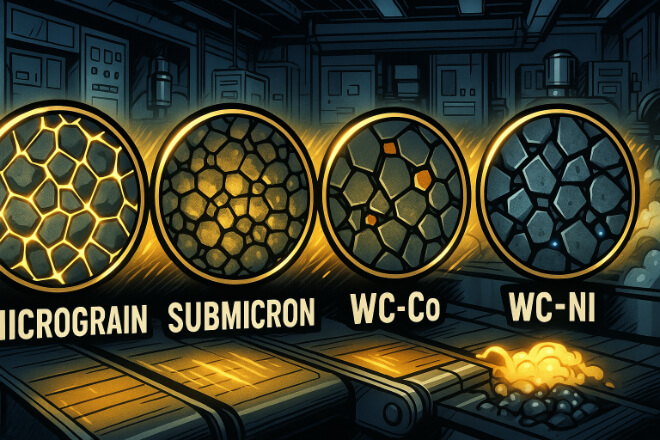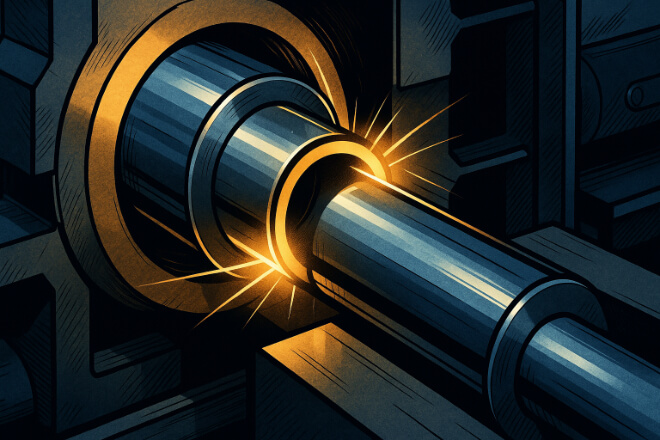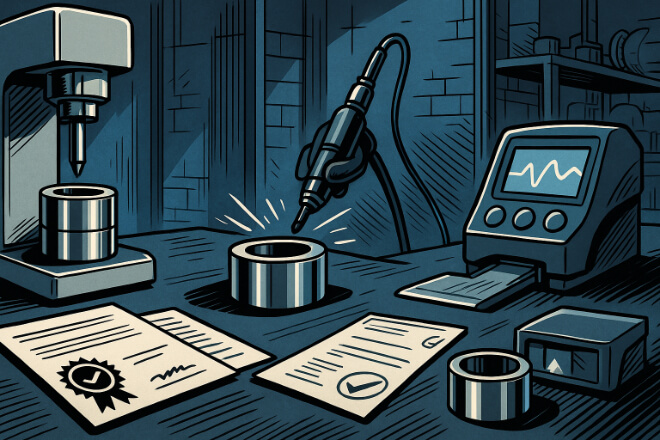Replacing بطانات كربيد التنغستن is a key task for OEMs that run pumps, compressors, motors, or rotating equipment.
A correct replacement process ensures stable performance, low downtime, and long service life.
This guide explains how OEMs can evaluate old bushings, select the right replacements, and work with suppliers to ensure accuracy and quality.
When OEMs Should Consider Replacing Tungsten Carbide Bushings

Tungsten carbide bushings are known for high صلابة and long life, but they still wear with time. OEMs need to replace bushings before they cause major equipment problems.
1). Common situations that require replacement:
Visible wear marks or scratches on the inner or outer surface
Loss of roundness, causing vibration or noise
Surface cracks, chips, or impact damage
Unexpected leakage in pumps or mechanical seals
Increased shaft friction or overheating
Corrosion or chemical attack in harsh fluids
2). Warning Signs Table
| حالة | Cause | Impact |
|---|---|---|
| Scratches / Wear grooves | Abrasive fluid or poor lubrication | Higher friction, faster wear |
| Loss of roundness | Uneven load or misalignment | Vibration and noise |
| Cracks or chips | Shock load or poor installation | Risk of sudden failure |
How to Collect Accurate Replacement Specifications

Accurate measurements are critical when ordering replacement bushings. Incorrect sizes lead to vibration, shaft wear, or early failure.
1). What OEM engineers should measure:
Inner diameter (ID)
Outer diameter (OD)
طول
Chamfer size and angle
Groove details (if any)
Roundness and concentricity
Fit class (clearance or interference)
2). Tools Needed
Micrometer
Bore gauge
Vernier caliper
CMM (optional for high-precision projects)
Specification Data Table
| المعلمة | Typical Value | Notes |
|---|---|---|
| ID / OD | ±0.005–0.02 mm | Critical for correct fit |
| Surface Roughness | Ra ≤ 0.2 µm | Lower for sealing parts |
| Roundness | ≤0.01 mm | Helps reduce vibration |
Choosing the Right Tungsten Carbide Grade

Different operating conditions require different carbide grades. OEMs must choose the correct combination of grain size and binder metal.
1). Factors that influence grade selection
Fluid type (clean water, slurry, chemicals, oil)
Shaft speed and load
Temperature
Corrosion environment
Expected lifetime
2). Common Grade Options
WC-Co (6–12%) — best general-purpose choice
Submicron WC — higher صلابة for abrasive media
WC-Ni — good for corrosive fluids
Binderless WC — chemical-resistant but costly
Fit, Clearance, and Installation Requirements

Even the best bushing will fail if installed incorrectly. OEMs must confirm correct fit class and installation method.
1). Typical Fits
Clearance fit — easy rotation, used in pumps
Interference fit — strong grip, used in high-load equipment
2). Clearance Guidelines Table
| Shaft Size | Recommended Clearance | Notes |
|---|---|---|
| 10–30 mm | 0.015–0.03 mm | General pump use |
| 30–60 mm | 0.02–0.05 mm | High-load systems |
| 60–120 mm | 0.03–0.07 mm | Large rotating units |
Documentation, QC Reports, and Supplier Support

A good replacement program relies on strong supplier support and documentation.
1). Important QC documents for OEM replacement
Dimensional report
صلابة test
كثافة report
Ultrasonic test results
Material test certificate (MTC)
Surface roughness report
2). Why documentation matters
It helps OEMs:
Verify accuracy
Track material quality
Reduce installation risk
Maintain long-term equipment reliability
Working With Suppliers to Ensure Long-Term Replacement Success

Strong supplier communication is essential for OEM replacement cycles.
1). What a strong supplier offers
Engineering feedback on drawing errors
Suggestions for improving bushing life
Alternatives for corrosive fluids or high loads
Short lead time for urgent replacements
Stable long-term production planning
2). Supplier Selection Table
| Criteria | Strong Supplier | Weak Supplier |
|---|---|---|
| QC Documentation | Complete and detailed | Missing or unclear |
| Engineering Support | Strong drawing feedback | Little or none |
| Lead-Time Stability | Predictable | Often delayed |
خاتمة
OEM replacement of tungsten carbide bushings requires accurate measurement, correct grade selection, proper installation, and strong supplier support.
With the right process, OEMs can reduce downtime, improve equipment reliability, and maintain long-term performance.
إذا كنت تريد معرفة المزيد من التفاصيل حول أي شركة، فلا تتردد في اتصل بنا.
